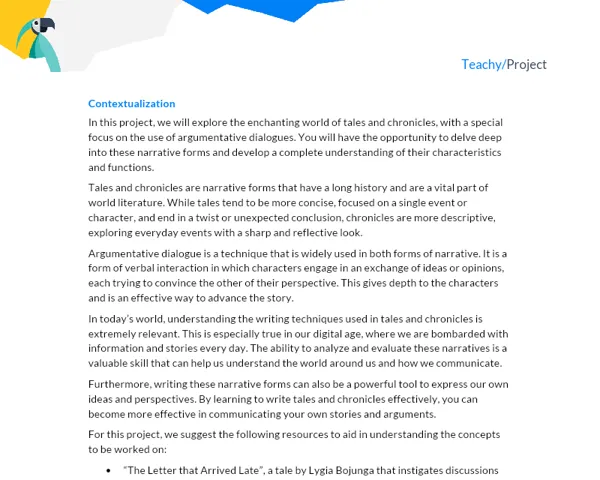Contextualization
Hello, little linguists! Today, we will embark on a great adventure through the world of sounds and letters. We are talking about phonemes and graphemes, very important elements to understand how our language, Portuguese, is organized.
Phonemes are the sounds we produce when we speak, and it is through them that we build words. For example, when we pronounce the word 'sapo' (frog), we can identify three phonemes: /s/, /a/, and /p/. Graphemes, on the other hand, are the letters or combinations of letters that represent these sounds. In the previous example, we have the graphemes 's', 'a', and 'p'.
Introduction
Now that we know what phonemes and graphemes are, it's time to understand how they work together. In our 'sapo' example, we realize that the word is formed by three phonemes, but only by four graphemes: 's', 'a', 'p', and 'o'. This happens because, in Portuguese, some letters can represent more than one sound. For instance, the letter 's' can represent the sound /s/ in 'sapo' and the sound /z/ in 'casa' (house).
Moreover, it is important to understand that not all sounds we speak can be represented by letters in our writing system. For example, in Portuguese, we do not have a specific letter to represent the sound /ʃ/, which is the initial sound of the word 'chave' (key). Therefore, we use the letter combination 'ch' to represent this sound.
The Importance of Phonemes and Graphemes
Now, you might be wondering: 'Why do we need to know phonemes and graphemes?'. Well, these concepts are fundamental to learn how to read and write. Knowing the phonemes of a word helps us pronounce it correctly, and knowing the graphemes helps us write it correctly.
Furthermore, understanding how phonemes and graphemes relate is important to comprehend the spelling rules of our language. For example, if we know that the phoneme /s/ can be represented by the grapheme 's' or by the grapheme 'ss', we can understand why we write 'sapo' with one 's' and 'passeio' (walk) with two 's'.
So, are you ready for this mission to explore the sounds and letters of Portuguese? Let's go!
Practical Activity: 'The Hunt for Phonemes and Graphemes'
Project Objective
The objective of this activity is to identify and recognize the phonemes and graphemes present in everyday words, developing the ability to distinguish sounds and letters and understand the relationship between them.
Project Description
Students will be organized into groups of 3 to 5 participants. Each group will choose 5 everyday words and then must identify the phonemes and graphemes present in each of them.
Next, the students will create posters for each word, where they will represent the phonemes with drawings and write the corresponding graphemes.
Finally, the groups will present the posters to the class, explaining which phonemes and graphemes were identified in each word.
Required Materials
- Cardboard or poster board
- Colored pencils, markers, or crayons
- Dictionary (optional)
Step by Step
-
Word Selection: In groups, students should choose 5 everyday words they find interesting.
-
Identification of Phonemes and Graphemes: Each group must analyze the chosen words and identify the phonemes and graphemes present in each of them. If necessary, they can use a dictionary to help with identification.
-
Creation of Posters: Using cardboard or poster boards, students must create a poster for each word. On the poster, they should draw the identified phonemes and write the corresponding graphemes.
-
Presentation of Posters: The groups will present the posters to the class, explaining which phonemes and graphemes were identified in each word. Encourage them to talk about the discoveries they made during the activity and explain the choices they made when drawing the phonemes.
Delivery Format
The posters will be the main form of delivery for the activity, as they will be presented to the class. Additionally, each group must submit a list with the chosen words and the identification of the phonemes and graphemes for each.
Reminder: This is an activity to be carried out in groups, encouraging teamwork, collaboration, and creativity. Have fun learning!



